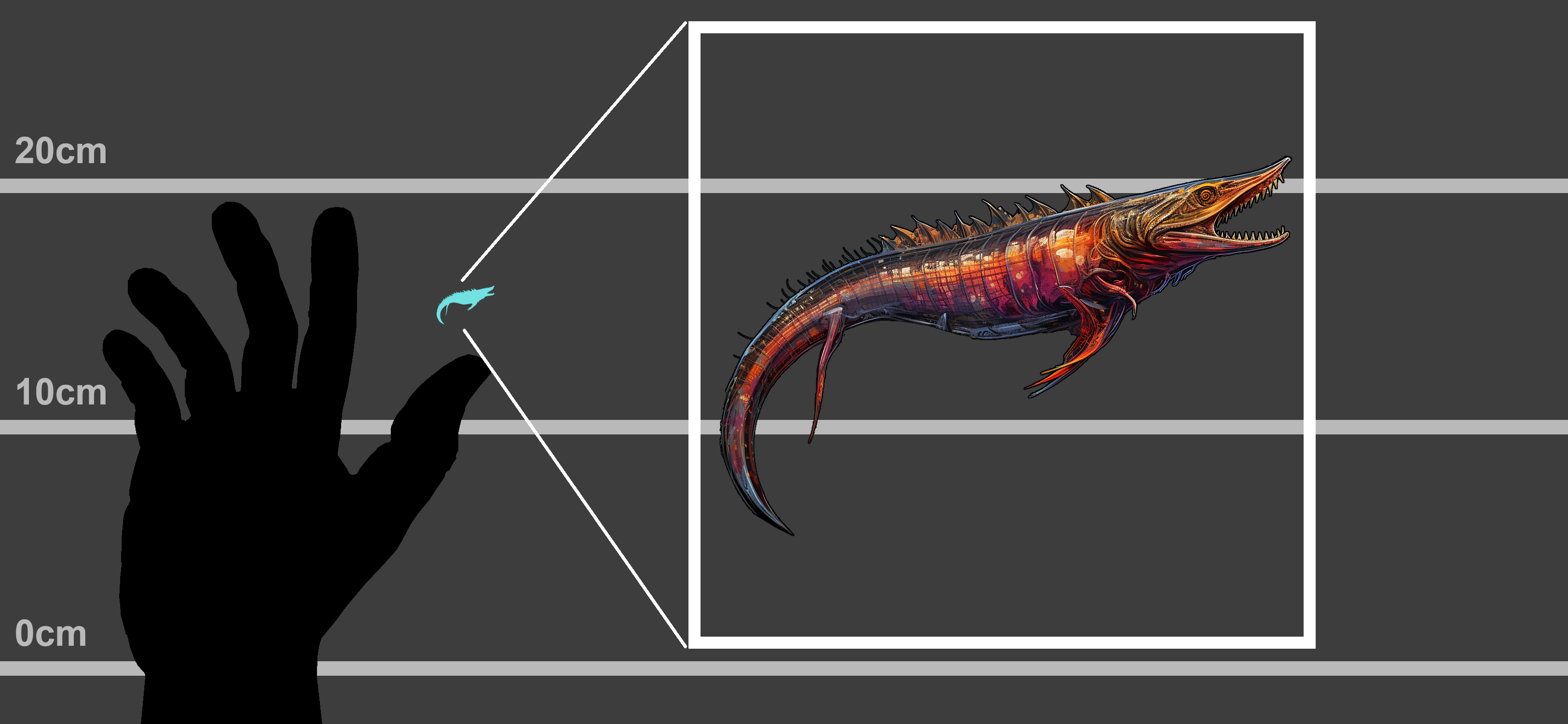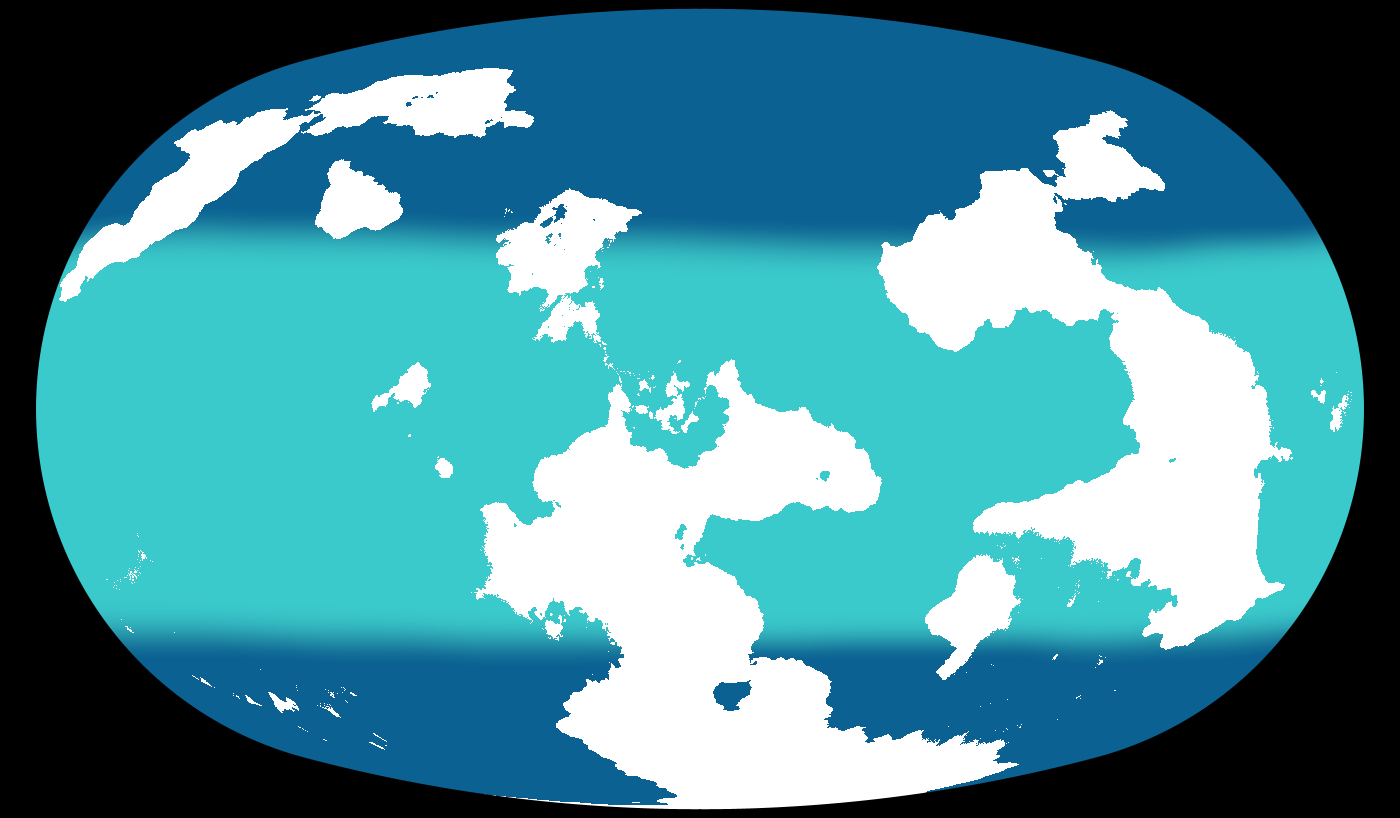Adakdra
Called Lizard-Plankton by humans, Adakdra are an entire family of aquatic reptiles, or Ekandra, comprising around 1500 species total. They inhabit warm and temperate bodies of water across the planet Collena. These creatures can best be described as absurdly tiny, far smaller than what is normally possible for vertebrates. Larger varietes are a centimeter long not including the tail, while smaller varieties are around two milimeters in length. These animals have very short lifespans, never lasting more than a few months. They float in the oceans around Collena, unable to swim against the ocean currents. They eat algae and any animal smaller than they are, including other adakdra.
Evolution
As for why and how this species of reptile was able to get this small, not much is really known. Their small bodies don't leave much in the way of fossils behind. Some Regalti and Vusinor scientists theorize that the world's relative lack of arthropods left open some ecological niches that vertebrates could take advantage of.
Reptiles ended up being the ones to benefit as some varieties became incredibly small over millions and millions of years. The issue is that there are arthropod varieties of plankton and many more than live in deep water, showing they never actually disappeared from the oceans.
One Vusinor scientist has a theory that the evolution of Adakdra (and many animals on Collena) could not possibly be the result of natural evolution and an ancient alien civilization did it instead. She has published several genetic studies on the Adakdra showing that their DNA has several anomalies that wouldn't be possible in natural evolution. That theory has never gained any traction in the scientific community across the galaxy.
Classification
Kingdom: AnimaliaPhylum: Chordata
Class: Reptilia
Clade: Ekandra
Family: Adakdra
Common Name(s):
Adakdra(Vevari, Common)
Lizard-Plankton(Human)
Geographic distribution
Found everywhere in the lower and mid latitudes up to about 50°N. Range Varies with the seasons. Cyan Color indicates their distribution.In order for a reptile to get this small, some evolutionary trade-offs had to be made. Their brains are virtually non-existent in smaller varieties and only the most basic functions are available. They have black and white vision, but they lost every other sense and can't taste, smell, or touch. They did develop a pressure sensing organ, allowing them to sense things in the water near them.
The larger adakdra do have skeletons with all the same bones as much larger reptiles including teeth. These bones are soft and pliable. Smaller varieties don't have much of a skeleton at all other than the most basic support structure in their spine tails, skull and jaws, and connective tissue for muscles. They don't have teeth.
Adakdra give live birth instead of laying eggs. The larger varieties give birth to a single young at a time that are are almost fully grown. The smaller varieties give birth to up to six young at a time. The females swell up to ten times their size when pregnant and usually die after giving birth.




Comments